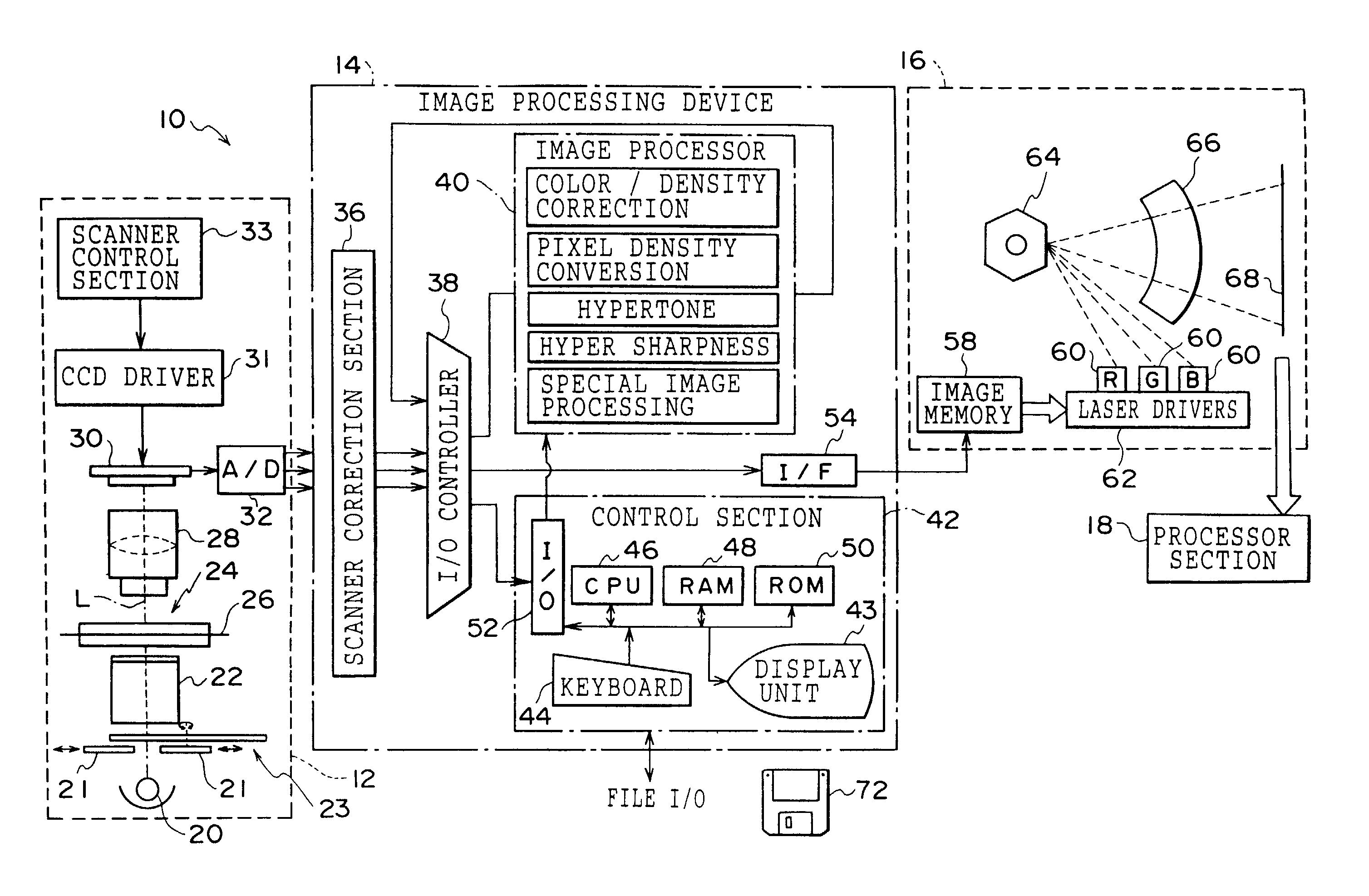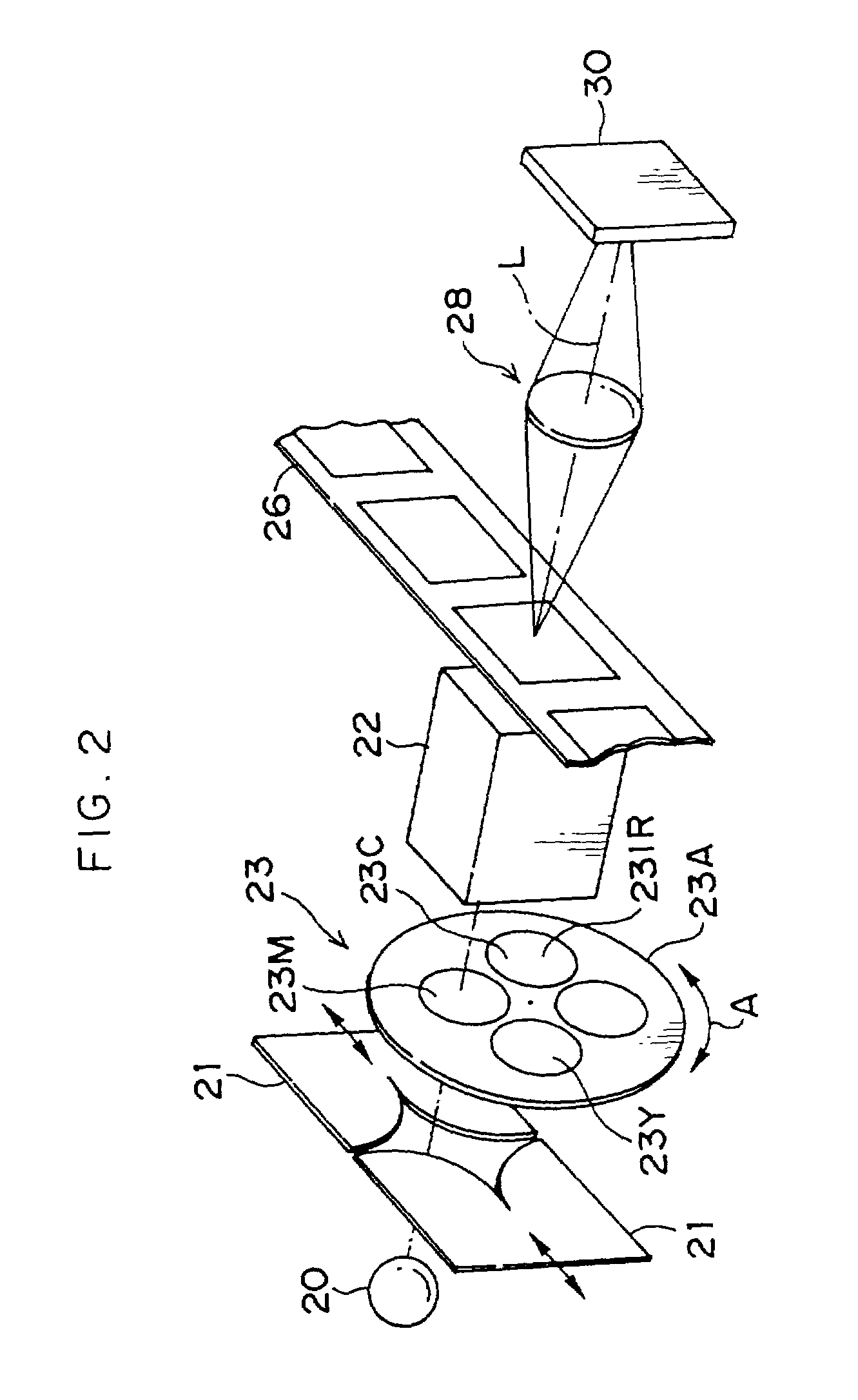Image processing device, image processing method and recording medium
a technology of image processing and image, applied in the direction of image enhancement, printers, instruments, etc., can solve the problems of difficult to eliminate defect portions in output images, parts are simply reduced, and foreign matter is clearly visible as a defect portion, etc., to suppress uneven correction accuracy, accurate correction, and high degree of accuracy
- Summary
- Abstract
- Description
- Claims
- Application Information
AI Technical Summary
Benefits of technology
Problems solved by technology
Method used
Image
Examples
Embodiment Construction
[0081]A description will now be given in detail of the embodiment of the present invention with reference made to the drawings. Note that the description below is of an example in which defect portions, caused by scratching or foreign matter present on the surface of a photographic film, are corrected.
[0082]FIG. 1 shows an image processing system 10 according to the present embodiment. The image processing system 10 is constructed from a film scanner 12, an image processing device 14, and a printer 16 connected in a series. Note that the film scanner 12 and the image processing device 14 correspond to the image processing device of the present invention.
[0083]The film scanner 12 reads an image (e.g. a negative or positive image of a photographed subject made visible by developing processing) recorded on a photographic photosensitive material (referred to below simply as a photographic film) such as a photographic film (e.g. negative or reversal). The film scanner 12 also outputs ima...
PUM
 Login to View More
Login to View More Abstract
Description
Claims
Application Information
 Login to View More
Login to View More - R&D
- Intellectual Property
- Life Sciences
- Materials
- Tech Scout
- Unparalleled Data Quality
- Higher Quality Content
- 60% Fewer Hallucinations
Browse by: Latest US Patents, China's latest patents, Technical Efficacy Thesaurus, Application Domain, Technology Topic, Popular Technical Reports.
© 2025 PatSnap. All rights reserved.Legal|Privacy policy|Modern Slavery Act Transparency Statement|Sitemap|About US| Contact US: help@patsnap.com



